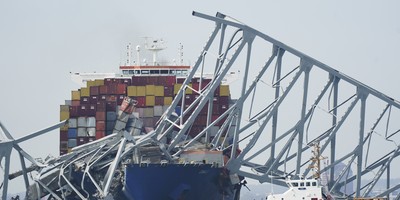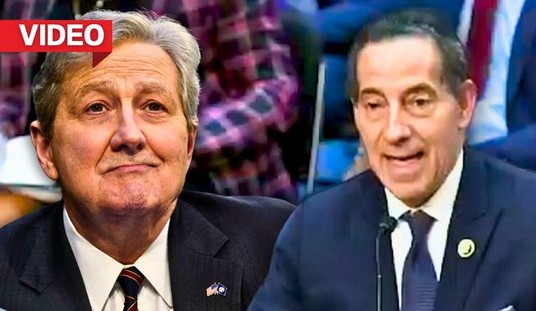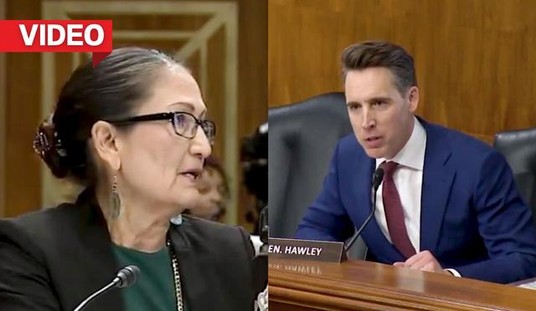The Taliban's commanders know stability and wealth are their enemies. Last week's suicide bomber attack on a U.S. Agency for International Development (USAID) office in Kabul is another act of terrorist symbolism and a calculated operation in the Taliban's "counter-counter-insurgency" strategy.
That attack, however, is also a sign of terrorist fear. Stability and wealth secure peace -- which makes them the allies of the United States and everyone else in the constructive world.
It is reminiscent of the Aug. 19, 2003, terror bombing of U.N. headquarters in Baghdad. By destroying the U.N. building in Iraq, al-Qaida and Saddam Hussen's ancien regime sought to force a withdrawal of U.N. personnel. This would achieve two goals. Even if manned by a small staff, a U.N. office served as a political symbol of international involvement in the process of creating a post-Saddam Iraq. A U.N. withdrawal perceptually isolates the U.S. and anti-Saddam, pro-democracy Iraqis.
The second goal was to make certain U.N.-associated international aid and development teams -- some governmental, some private -- left, as well. A liberalizing, productive economy threatens terrorists and tyrants. Al-Qaida depends on chaos, poverty and hopelessness to advance its extremist ideology: See, nothing works, so accept our harsh theology and political domination and at least you'll be right with God.
Saddam and his cohorts lived to steal, but his tyrannical game was to keep Iraqis dependent on him. Saddam's regime damaged Iraq's agricultural sector with a purpose: Shia Arab farmers growing their own food represented a threat to his control. Better the people depend on a monthly food ration provided by The Big Man. Don't cross him, or your family will starve.
Both al-Qaida's and Saddam's economic and political policies contrast sharply with what USAID describes as its "twofold purpose of furthering America's foreign policy interests in expanding democracy and free markets while improving the lives of the citizens of the developing world."
Recommended
USAID has roots in the post-World War II Marshal Plan, the economic and political effort to bolster Western Europe and defend it from domination by Stalinist Russia. The Truman administration knew guns were only one weapon in that geopolitical conflict. Strengthening democratic governance and fostering economic development were absolutely central to winning that long, debilitating struggle we call the Cold War.
Military-security operations protected these time-consuming processes. Rock and roll and blue jeans, protected by U.S. Army in Europe, won the Cold War. That is icon lingo for saying U.S. cultural attractiveness and economic productivity (rock and roll and blue jeans), complemented by a sustained and powerful military effort, ultimately contained and defeated the Soviet Union. This is multidimensional warfare.
Gen. David Petraeus, America's new Afghan commander, is thoroughly schooled on multidimensional warfare and understands economic development's essential role in winning the long, debilitating struggle dubbed the Global War on Terror. OK, the Obama administration insists on calling it an "overseas contingency operation," but 18 months deep into The Age of Obama, all but the most benumbed Obamaites recognize the phrase as reality-denying rhetoric.
In his contentious April 2008 testimony before Congress, Petreaus briefly referred to a chart titled "Anaconda Strategy versus al-Qaida in Iraq." The Anaconda Chart was a complex graphic that depicting the U.S. strategy for winning Iraq's intricate, multidimensional war.
It identified six lines of attack on al-Qaida: 1) Kinetics (which includes combat); 2) Politics (Iraqi political reconciliation was key); 3) Intelligence; 4) Detainee Ops (which includes counter-insurgency in detention facilities); 5) Non-Kinetics (education, jobs programs); and 6) Interagency. The "Interagency" line of operation included diplomacy and media operations. "Squeezing" al-Qaida in all dimensions was the big idea guiding Anaconda.
Afghanistan differs from Iraq. The U.S. has pursued a comprehensive, multidimensional strategy in Afghanistan, but trust Petraeus will vigorously pursue an energize Afghan Anaconda. Creating stability and wealth, however, takes time. President Barack Obama will have to exercise a skill he has yet to demonstrate: strategic patience.

























Join the conversation as a VIP Member